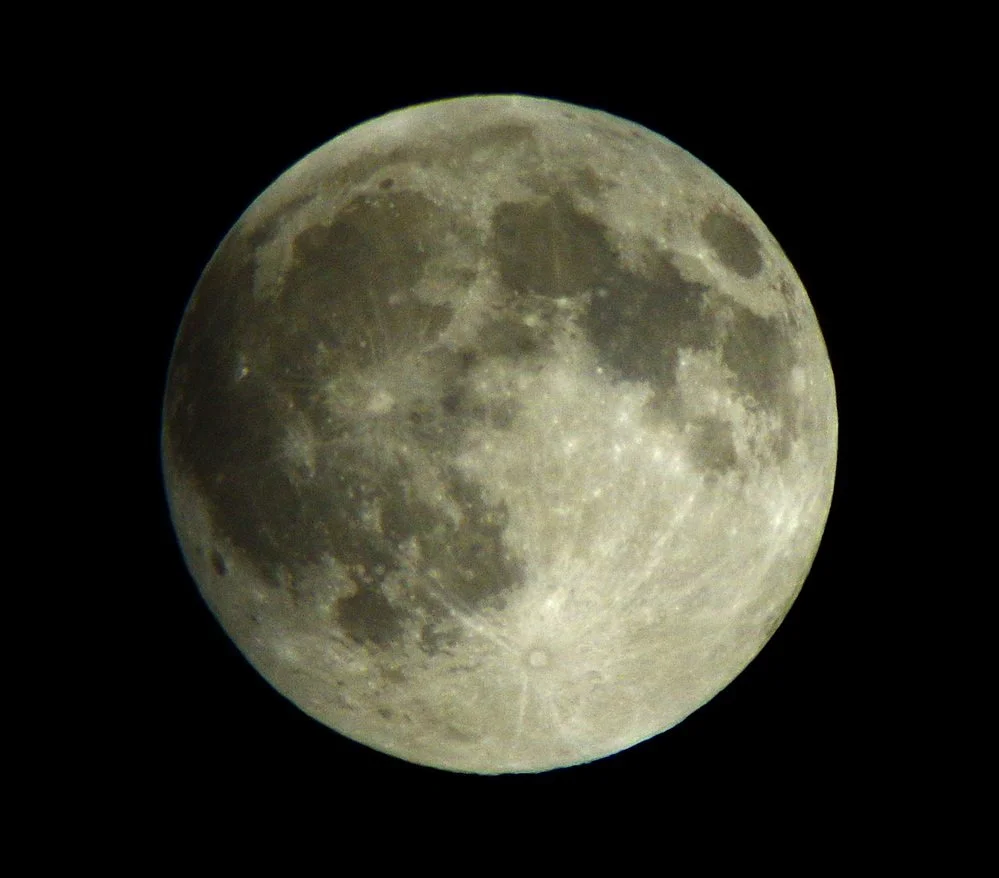Face of the Moon
Have you ever really looked at the moon (Photo 1)? Have you noticed that the face of the moon is marked with dark and light coloured areas? Have you ever wondered what those colours represent?
First, how did the moon form? One theory, supported by chemical analyses of lunar samples collected by the Apollo Moon missions, suggests that a small, Mars-sized planet, named Thea, collided with the early Earth about 4,500,000,000 years ago (4.5 billion years ago), and the debris from that catastrophic collision clumped together over time to form a satellite in orbit around the Earth.
Photo 1: A photo of the harvest moon showing the light and dark areas that characterize the face of the moon. Composed in Ottawa, Ontario, Canada, on October 6/25. Image by Andy Fyon.
Now, regarding the light and dark coloured areas, the light coloured areas on the pic are the lunar highlands. The highlands are made of the igneous rock called anorthosite. Anorthosite is composed mostly of the calcium-rich plagioclase feldspar mineral. Early in the Moon’s history, the entire Moon consisted of a sea of molten rock. As the early magma ocean cooled, this lighter plagioclase mineral floated to the top of the magma ocean where it formed an anorthosite scum – like the scum that forms on a bowl of cooling chicken soup. That scum became the lunar highlands when it cooled and turned to rock. The anorthosite crust formed between 4,150,000,000 years ago (4.15 billion years) and about 4,400,000,000 years ago (4.4 billion years ago).
The dark spots on the Moon are large, flat plains called lunar maria. The maria are ancient, areas where volcanic basalt rock was extruded or flowed on to the moon’s surface. The basalt maria areas formed when the surface of the moon was hit by big asteroid bodies. Those asteroid collisions took place early in the Moon's history. The majority of mare basalts appear to have erupted between about 3,000,000,000 years ago (3 billion years ago) and 3,500,000,000 years ago (3.5 billion years ago). The maria are dark in colour because basalt rock is rich in iron and magnesium and therefore, don’t reflect much sunlight. Maria cover about 15% of the Moon’s surface area and most of that occurs on the visible side seen from the Earth. The lunar maria are about 1 to 1.5 billion years younger than the lunar highlands.
By the way, calcium-rich plagioclase feldspar mineral, found on the lunar highlands, also occurs on the Earth. When ground into a powder, it used to be added to coffee whitener! So, the urban myth that the moon is made of cheese is not entirely true. Clearly, some of the moon made of coffee whitener – NOT!
Nov 11/25

